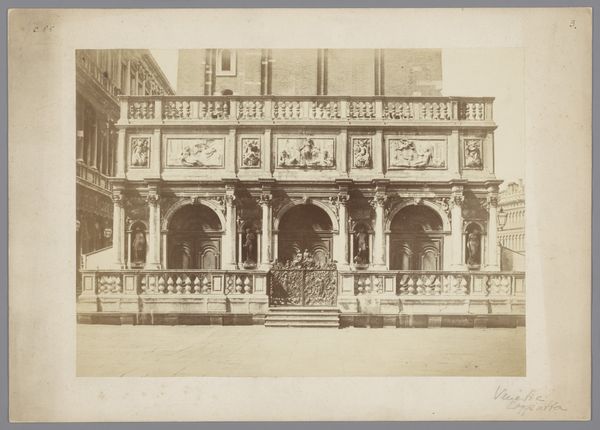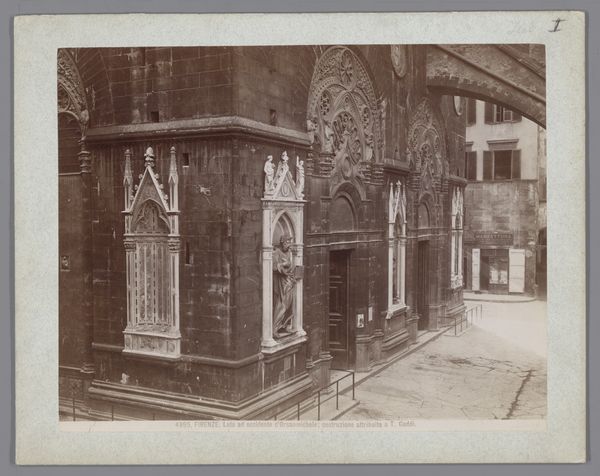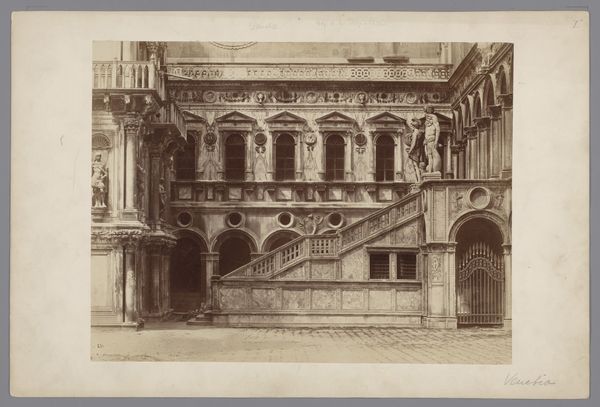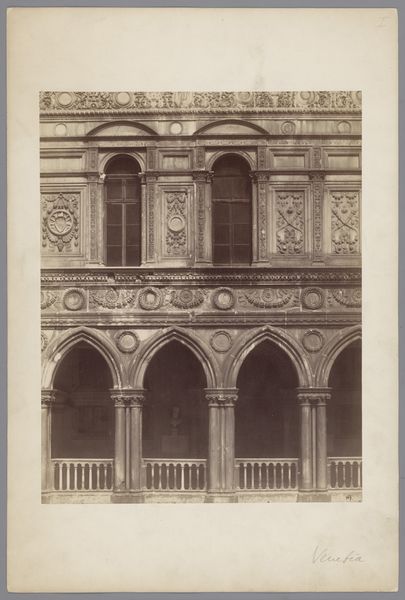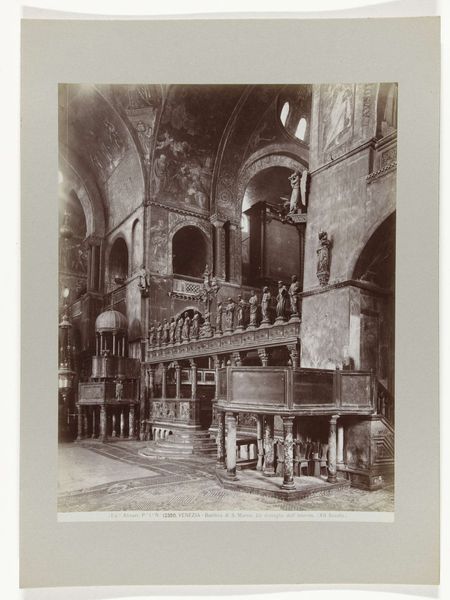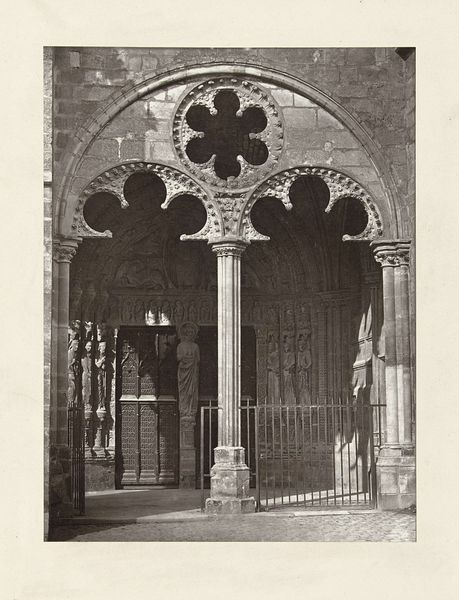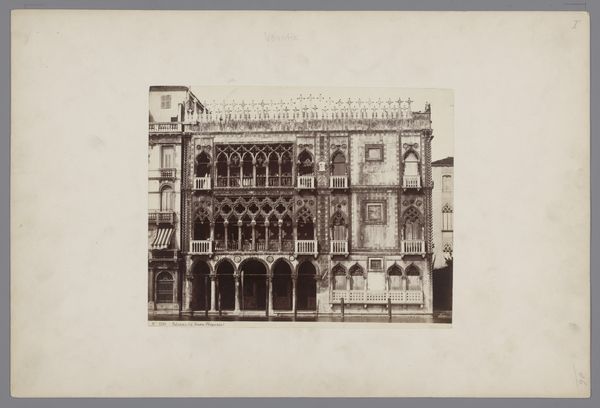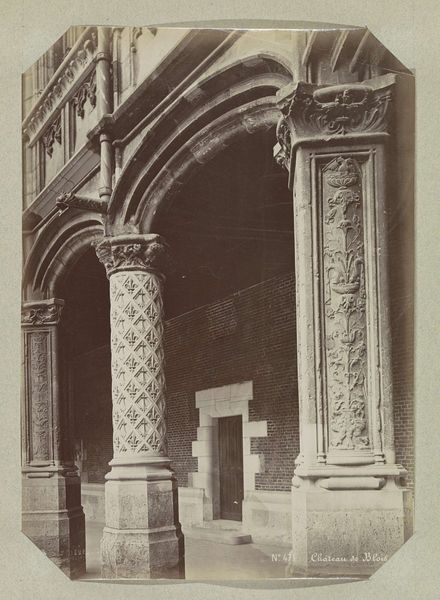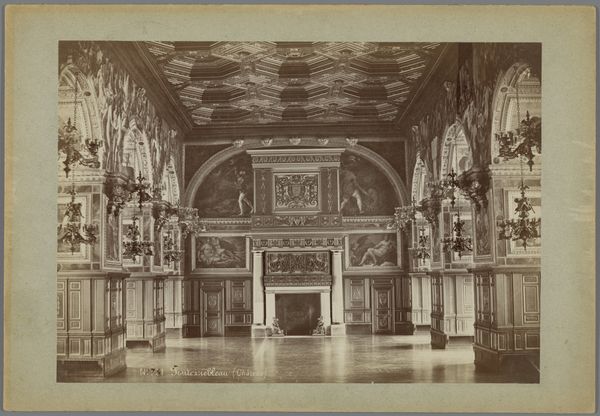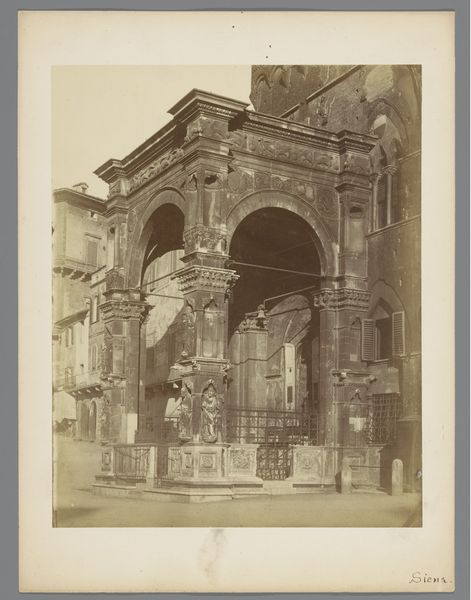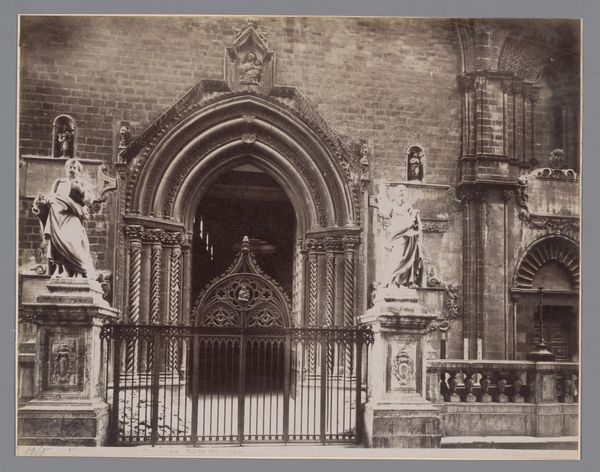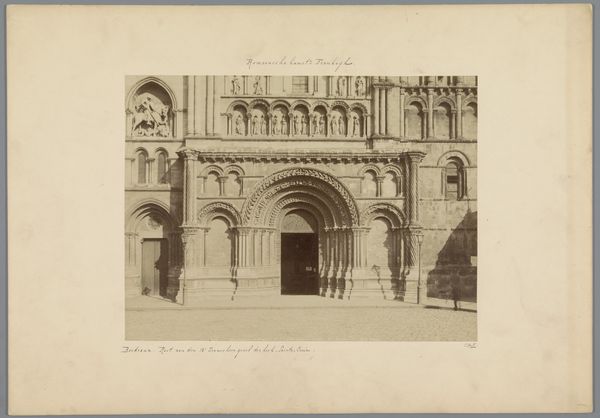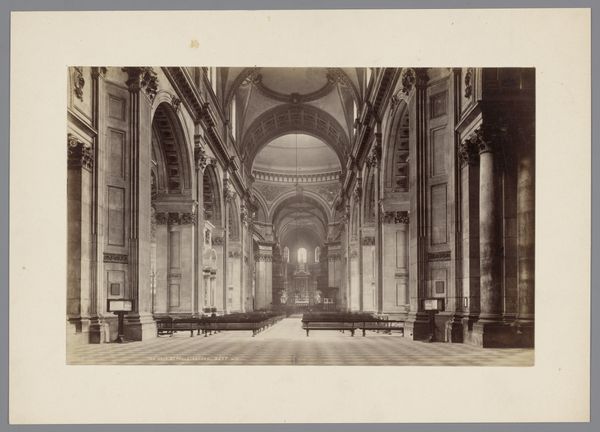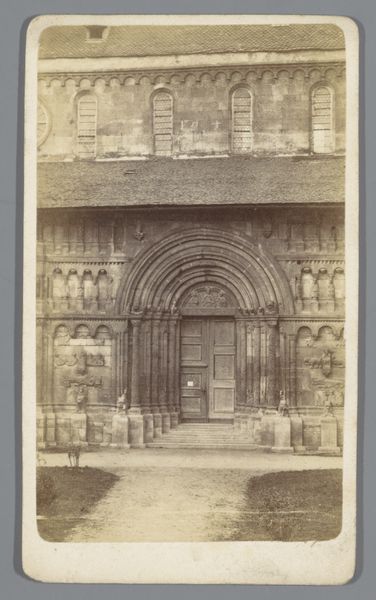
Dimensions: height 264 mm, width 354 mm
Copyright: Rijks Museum: Open Domain
Curator: Here we have Carlo Naya’s photograph, “Gezicht op de Loggetta van de toren van de San Marco in Venetië,” likely taken between 1870 and 1890. It's a striking view of the Loggetta in Venice. What are your initial impressions? Editor: Imposing. The photograph has a rigid formality in the symmetry and clarity of detail. The muted tones, shades of gray and beige, make me focus on the structure itself and the meticulous arrangement of forms. Curator: Indeed. Naya's skill lies in capturing not just the appearance, but the very texture and structure of the building. Think of the socio-economic conditions that fueled such detailed craftsmanship, the guilds and workshops that produced it. Photography, in turn, transformed how these monuments were seen and circulated. Editor: True, but I see a more direct semiotic play. The arrangement of sculptures, arches, and even the positioning of the doors create a visual language—a coded message of Venetian power and artistic prowess of the Italian Renaissance. How the components interact is significant. Curator: But don't you think that’s too narrow? Look at how Naya chose to depict this public building—the viewpoint, the deliberate inclusion of other anonymous buildings on the left. These elements are not just about aesthetics, but the material culture of the city and its representation. These prints were a commodity too. Editor: Agreed that photography transformed architecture into a portable object, an experience to possess and circulate, so its market appeal can not be denied. Yet, the symbolic content is undeniably rich: the arches act as frames, the statues suggest virtue, each detail speaks to classical ideals. Curator: Perhaps. However, I am more compelled by considering Naya's technical process, from capturing the image to producing prints for a growing tourist market eager for a visual connection to Venice and for something to take back home as a memory. Editor: A tension exists between these poles. He captures Venice at this specific period but also offers an interpretation that favors symmetry and control—idealized notions of beauty. Curator: A balanced view. Both the immediate impact of the photograph and its implications regarding production and consumption are inseparable. Editor: Indeed, and I feel the dialogue between these elements enhances its significance.
Comments
No comments
Be the first to comment and join the conversation on the ultimate creative platform.
